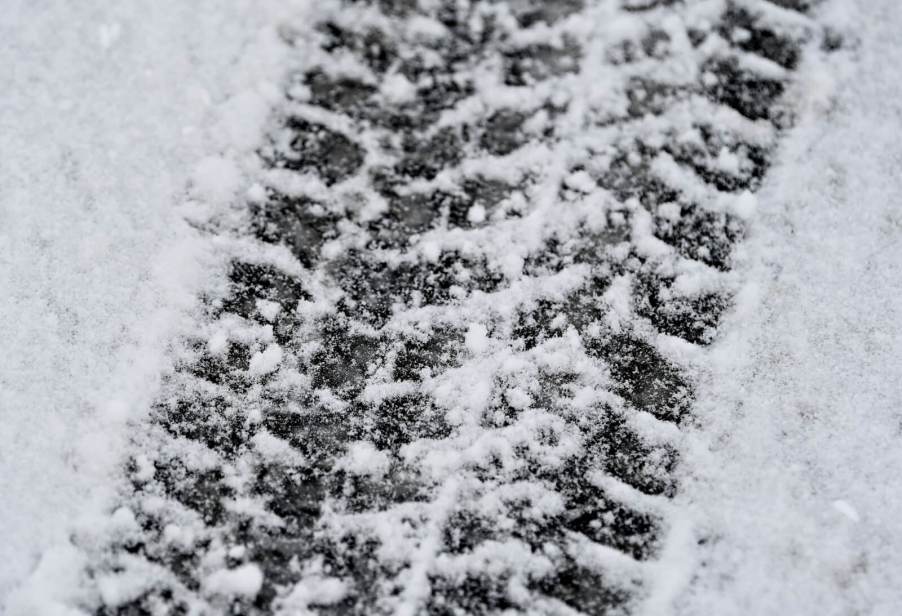
4 Reasons Why Your SUV Still Needs Winter Tires
Your SUV may look rugged and tough. But when the snow piles up or the roads are icy, a brawny appearance alone isn’t enough to get you home safely. The biggest difference maker when the weather turns sour is dedicated winter tires — even if your SUV has all-wheel drive or four-wheel drive.
1. AWD and 4WD are helpful, but not enough

Drivers tend to choose SUVs when they want a well-equipped vehicle to handle harsh driving conditions than more typical passenger cars. Along with higher ground clearance, most SUVs at least offer available four-wheel drive or all-wheel drive. Both drivetrain types can deliver power to all four wheels. This power delivery often offers a traction advantage on slick or loose surfaces compared to rear-wheel drive or front-wheel dive. However, four-wheel power delivery alone often isn’t enough to handle severe winter road conditions.
For starters, all-wheel drive and four-wheel drive focus primarily on getting your vehicle moving. They don’t play a significant role in bringing your SUV to a stop — a crucial performance metric for winter driving safety.
Furthermore, these drivetrains only do half of the job. They ensure power can reach each wheel for the maximum available traction. But they don’t physically connect that power with the snowy, icy, muddy, or frozen ground. That’s where winter tires enter the picture.
2. Rubber compounds matter
Not all tires use the same kinds of rubber. Summer tires use a soft compound that maximizes grip in warm conditions; all-season tires use a harder formula for long-term durability. Unfortunately, neither of these tire types maintains much traction when temperatures dip below freezing. But that’s precisely when winter tires shine.
Winter tires use specialized rubber compounds that stay pliable and grippy at sub-freezing temperatures. When grip levels for other tire types drop off, winter rubber compounds only get better. That means your tires can translate the power provided, no matter your SUV’s drivetrain, to real traction on snow, ice, or frozen surfaces.
3. Tread patterns make a difference

Many SUV drivers equip their vehicles with knobby, aggressive all-terrain tires for extra traction in rough conditions. While off-road tires can undoubtedly perform better in winter than all-season or summer rubber, their hefty tread patterns aren’t optimized for snow and ice.
Winter tires often don’t look as aggressive as all-terrain options. Still, their uniquely designed tread patterns perform better in winter-specific conditions. Tire manufacturers use specific siping (cuts in the rubber) styles to help produce grip and prevent snow and ice buildup that can lead to traction loss.
4. Winter tires and SUVs: the proof is in performance
Performance testing backs up the safety claims for winter-rated tires on SUVs.
Consumer Reports measured performance benefits in their showdown between all-wheel drive SUVs with all-season tires and a front-wheel drive sedan with winter tires. Typically, the all-wheel drive SUVs would have a notable performance advantage in winter conditions. But according to Consumer Reports testing, the two-wheel drive, winter tire-clad sedan was able to keep up with and even match the snow and ice performance of the SUVs with all-seasons.
The test also pitted a single SUV against itself using all-season tires and winter rubber consecutively. You can guess the result.
“We conducted braking tests in an all-wheel drive 2015 Honda CR-V, the best-selling compact crossover (of the time), with its original all-season tires, then with winter tires. The differences in stopping distances were considerable.”
How to tell if your SUV’s tires are severe snow service-rated
There’s a simple way to check if the tires on your SUV are officially severe snow service-rated. Such tires carry a symbol resembling three mountain peaks with a snowflake in the middle on their side walls. If your tires have that symbol, your SUV is ready to make the most of its winter-weather performance.


